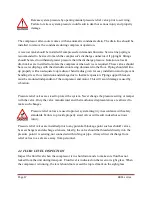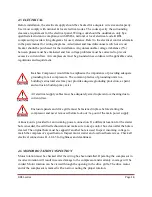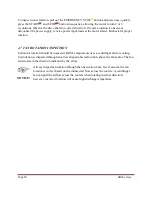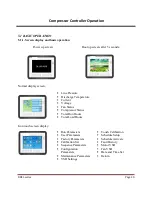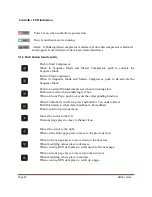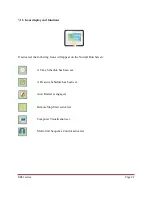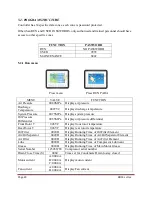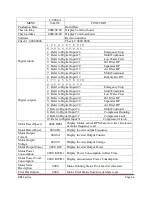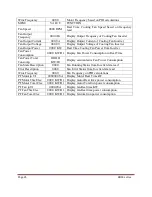
KRSL series
Page
10
Main motor transmit power to airend through a flexible, vibration-reducing coupling. There
should be no intermittent or unusual noises or vibrations when the motor is running during
unload or load condition.
The voltage and frequency of power source for the motor is indicated on the nameplate, the
motor can be operated continuously at the rated power × service factor. If the frequency of the
power source deviates from the rating value indicated on the nameplate by 2% of this value, or
under voltage/overvoltage exceeds 10%, there can be no guarantee that the motor will deliver
rated output power.
2.4 COMPRESSOR LUBRICATION AND COOLING SYSTEM
The lubrication and cooling system consists of a reservoir, centrifugal fan, fan motor, aluminum
finned fluid-cooler and after-cooler, thermal valve (or variable speed fan drive) and fluid filter.
High pressure forces the lubricant through a series of direction changes in the reservoir where it
is separated from the air. The fluid is then delivered to the thermal valve and fluid-cooler. Cooled
fluid will be filtered before being re-injected back into the compressor.
The thermal valve is a directional valve with a temperature sensitive device.
The thermal valve
fully closes the access to the fluid cooler when the fluid temperature is below 70°C (158°F).
Fluid (below 158°F) will bypass the fluid cooler, flow through fluid filter and re-inject into the
airend. As the fluid temperature rises continually up to 80°C (176°F), due to heat of compression,
the thermal valve begins to operate, and fluid will flow through the fluid cooler.
Ambient air is being forced through the cooler fins by the centrifugal fan, which cools the fluid
and compressed air in the cooler tubes. The after-cooler helps separate the water content in the
discharge air, and through the automatic condensate drain, the water will be drained. This avoids
water contamination problems downstream (in service lines). Cooler fins must be kept clean at
all times.
For the air-cooled units power in the range of 110kw to 250kw, fluid from reservoir circulates to
oil fluid-cooler directly. There is no thermal valve equipped for these motor ranges. A fan drive
controls the fan motor speed up and down to meet discharge target temperature.
2.5 COMPRESSOR DISCHARGE SYSTEM
Air/fluid mixture is forced into reservoir after compression. The reservoir has two basic
functions:
•
It acts as a primary fluid separator.

















